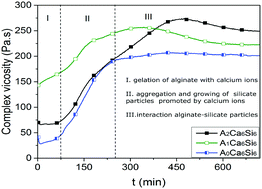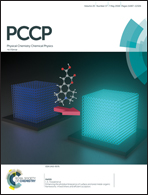In situ follow-up of hybrid alginate–silicate microbeads formation by linear rheology
Abstract
Hybrid alginate–silicate microbeads of about 10–20 μm were synthesized by combining alginate crosslinking, silica condensation in a one pot approach using a food grade emulsion as template. A fine tuning of the formulation composition (alginate, silica and calcium sources) is necessary in order to obtain core–shell microbeads instead of unshaped and irregular fragments or even perforated spherical beads. Importantly, in situ linear rheology provides insights into the reaction mechanism as a result of the rheological fingerprint profile obtained during beads formation.



 Please wait while we load your content...
Please wait while we load your content...